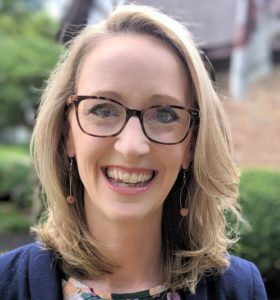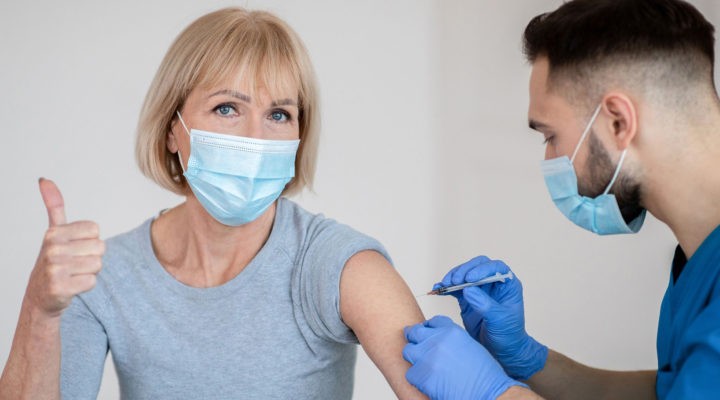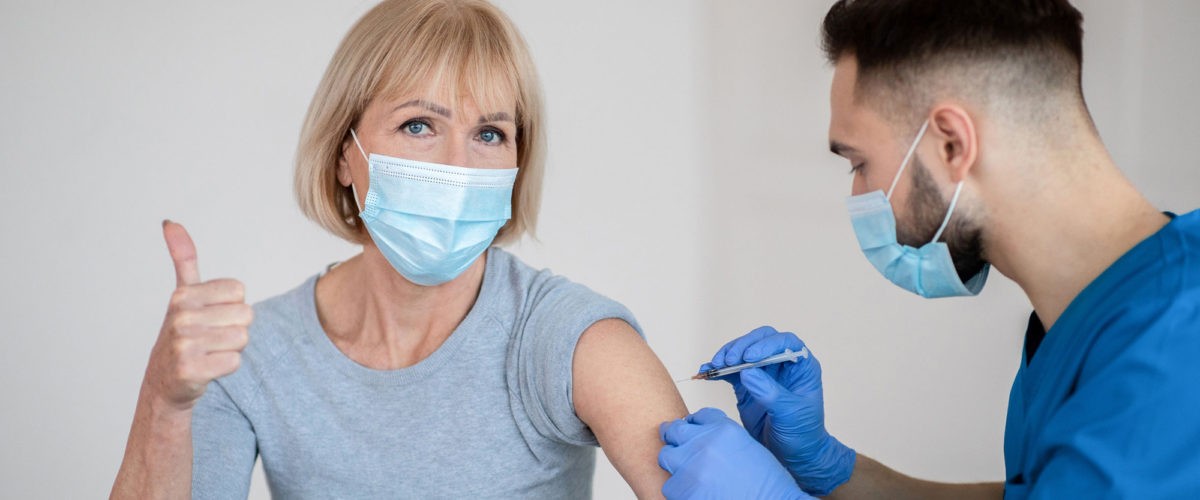As faith leaders continue to preach the public health benefits of the COVID-19 vaccines, they now have additional support to make the case.
The U.S. Centers for Disease Control and Prevention on March 29 reported results of a real-world study of the first two vaccines that showed they are 90% effective in preventing infection with coronavirus.

Emily Smith
“That’s a huge stinkin’ deal!” said Emily Smith, assistant professor of epidemiology at Baylor University and a faculty member at the Duke Global Health Institute. Smith is a Baptist layperson from Waco, Texas, who blogs under the name Friendly Neighbor Epidemiologist.
In a Monday blog commenting on the new CDC study, she said Americans should feel confidence in the Pfizer and Moderna vaccines (the two used in this study) because “they work really well.”
The third vaccine authorized for use in the U.S., made by Johnson & Johnson, was not covered in this study because its authorization came later.
Smith explained that she personally received the Johnson & Johnson vaccine and anticipates with additional research it “will look just as good, given what we saw in the trials already.”
The Pfizer and Moderna vaccines — both created through a process called mRNA — already had been found highly effective in clinical trials. The new real-life study of 4,000 health care personnel, first responders and other essential and frontline workers added confirmation.
Participants who were fully vaccinated with both shots of the two-part sequence were 90% less likely than others in the study to contract COVID-19.
Why this study matters
“As an epidemiologist, we are always worried about ‘selection bias’ in our study,” Smith explained. “This would happen if people that are in the Phase 3 trials look different than people in the real world. In other words, are what the trials found generalizable to everyone else? Another issue we think about it is the variants roaming around. At the time of the Pfizer and Moderna Phase 3 trials, the (new) variants we worry about were not circulating as much as they are now.”
The new study followed subjects whose jobs require them to be within 3 feet or less of others, a range known to facilitate easier transmission of COVID-19. Participants were drawn from eight U.S. cities in diverse geographic locations who were evaluated with the same protocols. Participants were tested for COVID every week for 13 weeks.
The results: Participants who were fully vaccinated with both shots of the two-part sequence were 90% less likely than others in the study to contract COVID-19. Of the nearly 4,000 participants studied, only three of those who were fully vaccinated tested positive for COVID-19, compared to eight people who had received only one of the two shots and 161 people who had not been vaccinated at all.
The takeaway here, Smith emphasized, is three people versus 161 people from equal-size study groups.
“The vaccines prevented infections,” she said. “This means that the vaccines protected against asymptomatic spread. The people studied were tested for symptomatic and asymptomatic disease. We have wondered if the vaccines prevented both since the trials only looked at symptomatic disease (which is still a good thing to look at since we are worried about hospitalizations and deaths).
“This data shows the vaccines prevented both symptomatic and asymptomatic disease — meaning a person doesn’t get infected and, therefore, can’t spread it to others unknowingly.”
“This data shows the vaccines prevented both symptomatic and asymptomatic disease.”
Smith’s advice to everyone: “Go get your shot, friends. This is our way out of the pandemic and to get to herd immunity.”
Clergy as influencers
The role of clergy as influencers has been much-discussed ever since the possibility of a vaccine became real. Just two weeks ago, The New York Times reported that “some of the most potent reasons people cite in resisting vaccines are rooted in religious beliefs, and indeed one obstacle these clergy members face is the inveighing against the shots by their own peers.”
However, the Times reported, “clergy members who believe in the importance of vaccines are uniquely positioned to counter those claims.”
A recent study published by the National Academy of Sciences found that vaccine efficacy is a leading selling point to get vaccine skeptics on board.
The national survey of representative residents in all U.S. states was conducted in August 2020 and again in December 2020. Among three factors studied as influencers in convincing people to take a COVID-19 vaccine, efficacy ranked highest.
“Vaccine acceptance improved when the efficacy increased beyond 70%.”
“Vaccine acceptance improved when the efficacy increased beyond 70%,” the study found.
A fall 2020 study by Gallup also found that reports of vaccine efficacy are the most important selling point to vaccine skeptics. The Gallup study looked specifically at Arizona, which has a higher-than-average rate of vaccine skeptics.
It found 82% of Arizonans would take a COVID-19 vaccine that has proved to be “safe and effective.” That’s nearly 30 points higher than the results achieved by a physician’s recommendation to get the vaccine in Arizona.
Divides remain on the threat and the cure
Meanwhile, Pew Research Center recently reiterated a statistic previously reported by other polling firms: There remains a significant divide among Americans on willingness to be vaccinated based on political affiliation. That is driven, in part, by a partisan divide over how much of a public health threat COVID-19 presents.
“The factors tied to the decision to get a COVID-19 vaccine are complex and interrelated,” Pew noted. “Trust in the vaccine research and development process ties strongly to people’s vaccine attitudes and actions — vaccine intent is 75 points higher among those with high trust than low trust. Those who place a lot of emphasis on community health in the vaccination decision are 60 points more likely than those who give this no consideration to intend to get a vaccine.”
Overall, 69% of Americans told Pew in February 2021 that they either have gotten or intend to get a COVID-19 vaccine. That’s up 6 points from what Americans said they would do in November 2020.
“The increase in intent to get a coronavirus vaccine can be seen across most demographic groups, though sizable differences remain,” Pew said:
- A majority of Black adults (61%) now say they plan to get vaccinated or already have, up 19 points from November.
- A large majority of Democrats and Democratic leaners (83%) intend to get vaccinated or already have received a vaccine, up 14 points since November.
- There has been a more modest 6-point increase among Republicans and Republican leaners (from 50% to 56%).
- As a result, the partisan gap has grown from 19 points in November to 27 points in the current survey.
- Those with higher levels of education and income continue to be more likely than those with lower levels of education and income to say they plan to get a vaccine or already have received one.
- The oldest Americans are much more likely than younger Americans to say they’ve received a vaccine or intend to get one.
- Those who live in suburban (73%) and urban (70%) areas are more likely than those in rural areas (60%) to say they have been, or plan to get, vaccinated against coronavirus.
Related articles:
Your friendly neighbor epidemiologist has an important message for you


